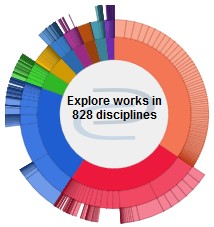Degree Name
Master of Science (MS)
Semester of Degree Completion
1995
Thesis Director
Rob Doyle
Abstract
The occurrence of head and neck injury in football has prompted various authorities to outline recommendations which can be used as a guideline for the prevention of such injuries. The seven recommendations included for study in this research were classroom education of athletes, correct technique emphasis, enforcement of established rules, conditioning of neck musculature, medical coverage of events, athletic training services, and the proper fit of helmets. The primary purpose of this study was to determine whether coaches of high school football programs were implementing the commonly cited recommendations for preventing head and neck injuries. In addition to levels of implementation, both ratings of importance and the relationship between perceived importance and implementation were measured for each recommendation.
One hundred and two coaches (54% of the sample) across the state of Illinois responded to mailed questionnaires which elicited data on whether they implemented each recommendation into their football program and how important they felt each recommendation was in preventing head and neck injuries. Frequency counts were used to describe levels of implementation and ratings of importance for each recommendation. Chi square analysis was used to determine whether perceived importance affected the implementation of each recommendation.
Findings revealed very high levels (near 100%) of implementation for correct technique emphasis, rule enforcement, and neck strengthening. Levels of implementation for classroom education and athletic training services were somewhat lower, yet still around 80%. Levels of implementation for medical coverage of events and proper helmet fit were significantly lower, 28% and 61 % respectively. The highest levels of rated importance were among those recommendations with the highest level of implementation, those being technique emphasis, rule enforcement, and neck strengthening. However, proper fit of helmets was also perceived as very important. Perceived importance was considerably lower for classroom education, athletic training services, and medical coverage of events. When the relationship between implementation and importance was studied for each individual recommendation, classroom education, rule enforcement, and neck strengthening showed a strong significant difference in levels of implementation between those who rated importance differently. This finding suggests that perceived importance by the coach may have been a strong determinant in whether these recommendations were implemented. Chi square analysis could not be performed for technique emphasis due to the lack of varied responses for both implementation and perceived importance. There was no statistically significant difference in levels of implementation of athletic training services, proper fitting of helmets, and medical coverage between those who rated their importance differently. These findings suggest that there may be stronger determinants than importance of whether the latter recommendations were implemented.
Recommended Citation
Heikkila, Jill D., "Prevention of Head and Neck Injuries at the High School Level of Football: Implementation Levels and Perceived Importance of Established Recommendations" (1995). Masters Theses. 2018.
https://thekeep.eiu.edu/theses/2018




